I understand that the subject of the end of Ninjago has been discussed online frequently over the past few years. So when LegoDavid opted to write an article here about why Ninjago should end, I was anticipating a variety of responses – both yea/nay – when shared abroad.
Despite the (tired?) frequency with which the subject has cropped up, it was very interesting to still find folks at the ready to discuss it.
Rather than retreading the excellent and intriguing points already made about the implications of a Ninjago retirement, this post instead reflects my thoughts about the question of what LEGO values today… and how Ninjago seems to fit into the current ‘program’.
Before we get going, be aware: TALM and those whose perspectives are expressed on this site are not in the business of trolling or promoting baseless negativity. On the other hand, I also place no value in practicing self-censorship merely for the sake of maintaining a façade of positivity, when it is undue. Worth bearing in mind is the fact that criticism of a company and it’s products – even a personable company like LEGO, which is deeply valued the world over – does not equate to an attack on current fans or consumers. Just saying.
Affiliate shopping links can be found in this post. At no extra cost to you, making a purchase through them helps support this site and future LEGO-centric content. As an Amazon Associate I earn from qualifying purchases.
What Does LEGO Value? Safe Profit.
So now I would like to address for readers some of the points of disagreement raised on Eurobricks.
Over the course of the past decade, Ninjago has certainly been the avenue for LEGO to release some slick and multi-functional pieces, part prints, part uses, and stunning sets like the Airjitzu Temple and the Ninjago City series, to just name a few.
But recently with the jungle islanders and the undersea worlds, Ninjago is looking more like a convenient crutch for LEGO. LegoDavid has already raised some valid points about that topic. What I want to share here instead is my thoughts on how the same basic philosophy and design principles of Ninjago have resulted in a cumulative change in LEGO… and perhaps not for the better.
Now, as a profit-oriented toy company, LEGO obviously and simply will not seek to cater to an audience which does not exist in sufficient numbers to justify the time and resources to make a theme for them. It does not matter how much nostalgia such an audience has.
While LEGO’s actions lately have shown their reluctance to trot out new original themes, the company has nonetheless tested new ideas in established brand staples like LEGO City, and now LEGO Ninjago. But what a double-edged sword it is! And at what cost to the imagination that LEGO is supposed to embody?
This strategy of “testing” new ideas, though safe for LEGO and accessible to a wide audience accustomed to seeing those existing themes, is yet bound to the specific contexts of those particular themes.
How is the End of Ninjago a Part of a Big-Picture Issue?
While it is true that some self-centered adults may expect for LEGO to display a disproportionate interest in catering to them, I do not believe that very many niche fans are self-centered for critically questioning LEGO’s current methods.
The truly self-centered AFOLs are the ones who attempt to stigmatize and jeer a LEGO IP as well as its fanbase (remember BIONICLE, CCBS sets, or the recent “controversial” shift in Lego City road plate functionality).
Now on the other hand, there is a small minority (maybe not so small, who knows) of idealistic people – like me – who grew up with LEGO and who care a lot about not only the success of the company but also their integrity.
Sales numbers mark tangible value. They are the hard, cold facts of the real world. LEGO, as do all profitable companies, live or die by them. However, LEGO is one of those special companies that also derives its value from the intangible: the wonders of the imagination, and yes, idealism and nostalgia.
Today, LEGO is fulfilling the practical obligation to itself (survival and profit), but failing the awesome obligation to their customers (youth). LEGO is failing to live up to and deliver the imaginative potential of the overall brand.
Ninjago sells, but how much can a singular theme like Ninjago deliver to the audience’s imaginative experience? The world is huge. And surely Ninjago is not the only profitable theme left in the world for LEGO to tap.
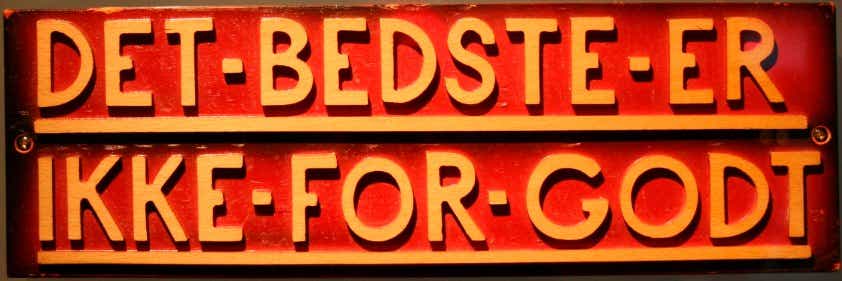
This is the problem I see. The LEGO Group is no longer honoring their classic philosophy “only the best is good enough”. The LEGO Group is paying lip service to their core values, here-and-there dropping curt little nostalgic nods to their past, and ultimately giving the intangibles the very short end of the stick… in favor of expedient profit.
This methodology inevitably affects the quality of what the target audience (youth) gets and what the self-centered adults get. All are impacted. Judging purely from their actions and releases, LEGO is no longer aiming to deliver “only the best”, they are only aiming to deliver what will profit.
What Are LEGO’s Values and Why Do They Matter?
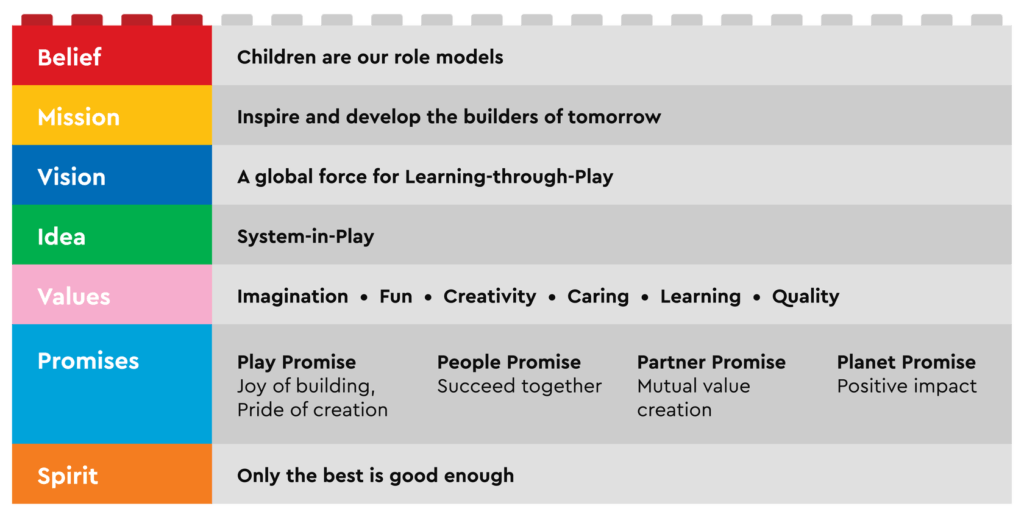
Again, I must emphasize that LEGO’s job is not solely to make money. And the ends do not always justify the means.
The imagination – especially that of children – is a sacred thing. The LEGO Group does not seem to be taking that seriously enough at the moment. They are relying on fans, fan communities, and user-generated content (LEGO Ideas, LEGO World Builder Powered By Tongal) to make up the slack. That is what bothers me; and though it is this site’s namesake, anger is not what is blindly speaking here. Nor is it blind nostalgias.
History repeats, and instead of a money problem this time around, Lego is getting into a problem of ethics and integrity.
The LEGO Group is a special company, with a proud history. But the content and marketing coming from LEGO today is simply becoming so artificial, too engineered and formulaic and PR’ed.
You know what it’s like, reader?
It’s like a concocted witch’s brew of fleeting glamour. LEGO today is not trying to go BIG. It’s not grand, its not broad, it’s not timeless. It’s becoming too narrow, too closely tied to the petty, to the “pop” in pop-culture. It’s as if the overall approach is to merely generate a photocopy of a photocopy ad nauseum… instead of drawing on rich content and themes from the best and most idealistic of human nature, world culture, and history.
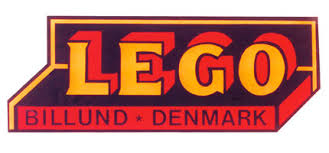
That’s where I stand. I can see that there is a real problem developing here, but I’m not certain yet of the solution.
And I cannot conclusively deduce why other recent themes like Hidden Side, Monkie Kid, Nexo Knights, Chima, etc., have not met LEGO’s profit standards. Of course, LEGO would (I hope) have a better idea than me, but it does not always seem to be the case that they are in the know…
Overall, this issue still baffles me somewhat, and the fact that the LEGO Group has been unable or unwilling to resolve it seems likely to be in part due to high arrogance and complacency, or negligence on their part.
With that said, I do not believe that ending Ninjago is the solution, as least not yet. Other themes that are developed to replace Ninjago will need to offer an equally compelling-yet-new appeal and new innovation in parts and prints offered.
Somehow I do not see it as a healthy approach for LEGO, a company in the business of unlimited imagination and creativity, to be binding their thematic image too tightly to the Ninjago context, or the licensing context. When considering the LEGO Group’s core values, such a marketing and development approach looks very disingenuous. One might even say soulless.
It’s as if the messaging seeping out of corporate is saying: “here’s the ‘vehicle’ (the product). Here’s the ‘car’. Take it. We (the Lego Group) are not interested in driving you anywhere wonder-full anymore. It’s too risky. YOU drive where YOU want. Here’s a heap of pieces in #21330 Home Alone Mansion. Run along now. Oh and play well btw.”
This overall vibe, this cold and cowardly corporate/elitist complacency is what alerts me to an unresolved and growing problem. The LEGO Group needs a wake-up call, a market correction, something!
Again, it bears repeating: the world is big. LEGO, is what you’re offering today the best you can do? Is that the pinnacle of profit? Is that all there is?
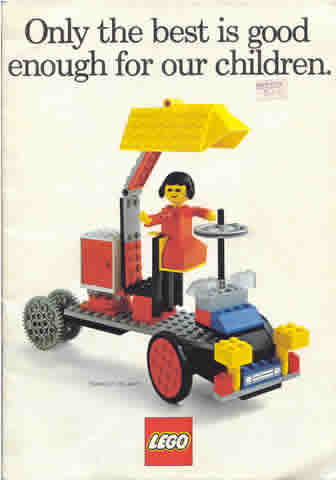
Outside of the licensed themes and Ninjago, where do you see the opportunity for LEGO to do better and more fully realize the LEGO Group’s potential?
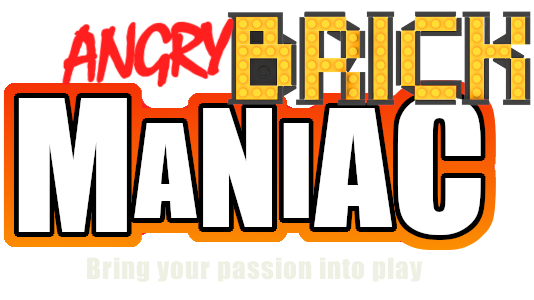
I grew up with Lego and the house is still full of Lego from my 2 boys, who are now grown up and have flown the nest. Lego always had quality that one came to trust and rely on. A business needs to survive, but it doesn’t only need profit to survive, it needs customers that believe in the brand.
Personally I would like to see Lego become more eco friendly and sustainable and to stop using virgin plastic for the popular building blocks. Do you know what Lego is doing to switch from using virgin plastic? Thanks
Very true, Line. Long-term, LEGO needs some robust in- house themes that will give customers a reason to believe in the brand… rather than merely a conduit for external and existing pop culture IPs.
LEGO has been experimenting with plant-based plastics, and they have expressed the intention to eliminate virgin fossil-based plastics by 2030. The “eco-friendly” approach has proven challenging though – to not sacrifice strength in bricks that must do lots of heavy lifting, and to not sacrifice color integrity of the bricks…
I have actually been thinking about ‘investing’ with lego, but not sure if it would still be worth it. Like the new “Titanic” building from Lego, looks fantastic! But the thing is, I couldn’t keep it locked up somewhere in the attic without wanting to build it all myself, my fingers would be itching to much to keep it inside the box haha! I actually do not know what ‘ninjago’ is, to be honest. Could you tell me something more about this please? thanks!
LEGO does tend to have a lot of after-market value. So if you want to casually pick up a big-ticket set for the express purpose of earning a sizable return-on-investment down the road, go for it!
Like you mentioned about your own experience though, I’m also not one to merely get a LEGO set to simply put it away. I can do it for sets that I speculate will increase in value over time, which I may want to sell off, and that I do not have a special personal liking for, but even then… funds, storage, inventory, and other factors would then become a consideration if it becomes a less casual undertaking.